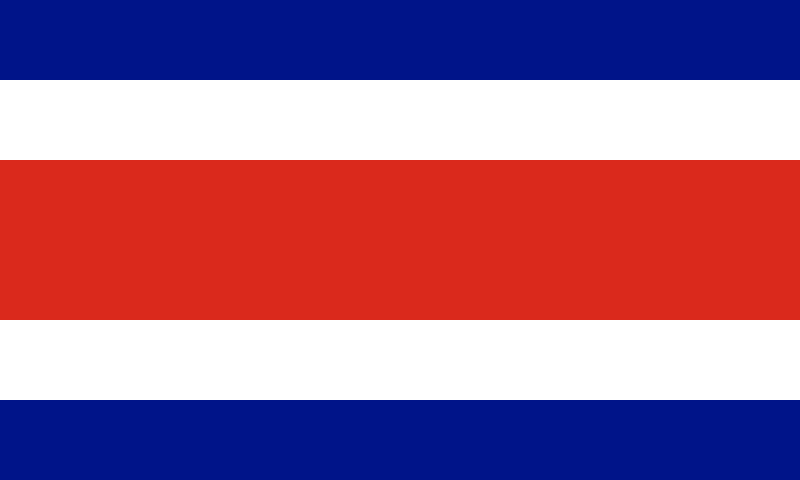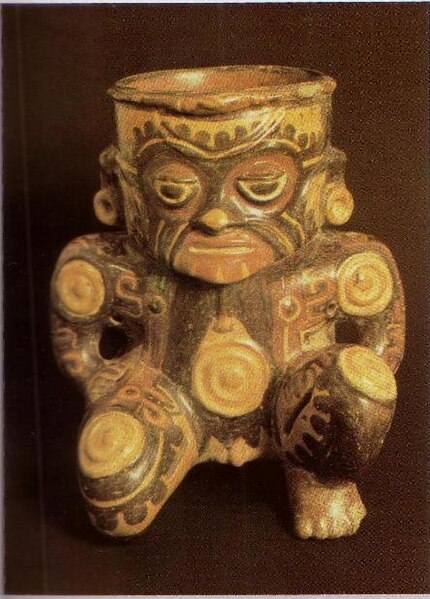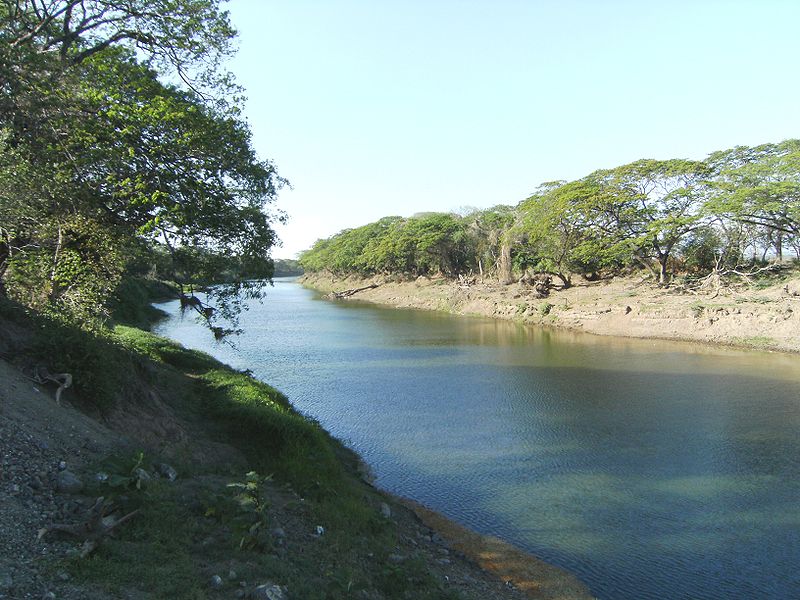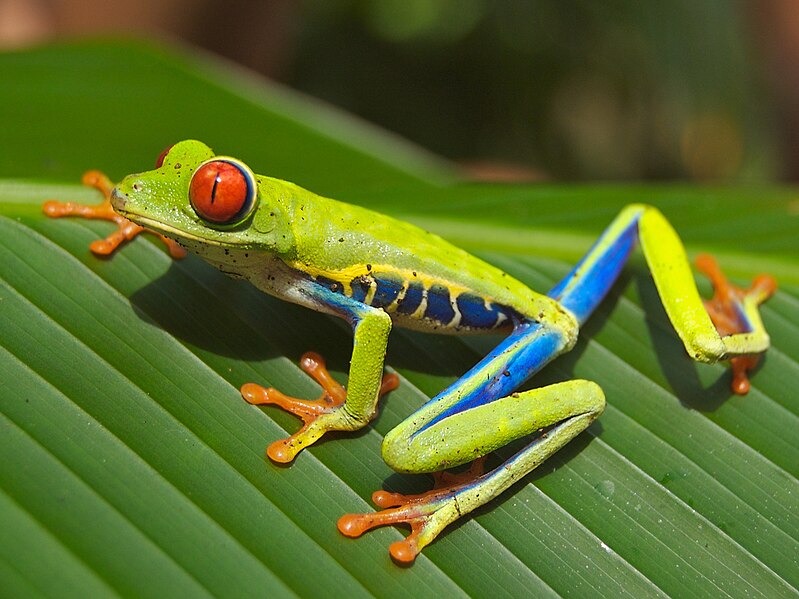Pre-Columbian period.
Pottery Guanacaste, Middle Polychrome period (800-1200
AD).
On the left, vessel jaguar Nicoyan deified. On the
right, two-tone mug with monkey motif (1200-1500 AD), found in the Tempisque
Valley.
Pre-Columbian gold pieces, found in the Valle del
General. Gold Museum, San Jose, Costa Rica.
Stone Ball (Chiriquí period from 800 to 1500 AD).
National Museum of Costa Rica
The oldest evidence of human occupation in Costa Rica
is associated with the arrival of groups of hunter-gatherers around 10 000 - 7
000 years BC, with ancient archaeological evidence (making stone tools) located
in the Valley Turrialba, in the presence of Clovis-type spear points (U.S.) and
fishtail (South American), which opens the possibility that in this area
converge two different traditions of specialized hunters.
The incipient agriculture appears to 5 000 BC, mostly
given by tubers and roots. For the first and second millennia BC there were
already settled farming communities, small and scattered, although the
transition from hunting and gathering to agriculture as the main means of
livelihood in the area is still unknown.
By 2000-3000 BC, shows the use oldest known pottery,
fragments of pots, cylindrical vases, plates, gourds and other forms of vases,
decorated with incised or techniques such as grooves, patterns and modeled.
Between 300 BC and 500 AD, depending on the region,
given the change of a tribal organization to a chiefdom society.
There is the construction of foundations with
boulders, mounds, ovens, storage pits, and statuary. The corn is to establish
itself as the main crop in some regions, while in others there is a mixed
system, besides the use of coastal resources (fisheries) and hunting.
In this period appears the production and use of
artifacts of jade and other green stones, ceremonial metates, stone finials
rods and special ceramics, begins to use metal objects (copper and gold)
especially in the Central Valley, Central and North Caribbean.
The panel called metates tripods are a sign hanging
outstanding and unique Costa Rican pre-Columbian art, decorated with animal and
human elements. Its manufacture began in the late part of this period (0-500
AD).
Between 300 and 800 AD first appear complex chiefdoms,
with presence of large villages and infrastructure (bases, roads and burial
mounds). There is the hierarchy of settlements, with major towns and secondary
towns, with lineages of hereditary power and specialization of labor, with the
appearance of a chief in the village primary and secondary villages subordinate
chiefs.
From 800 AD until the Spanish arrived in the sixteenth
century, there was an increase in the size and complexity of the internal
design of the villages, and regional differences were accentuated. The presence
of numerous cemeteries, simple and complex, massive infrastructure, diversity
of household goods and luxuries, gold development, trade and regional conflicts
over territory and resources chiefdoms are characteristic of this era. The
social hierarchy includes key individuals as the chief and shaman (for example,
or Awapa sukya among the Bribri, a physician of both body and spirit), and the
common people made up of artisans and farmers. It starts the use of gold as a
symbol of rank, especially in central and Great Chiriquí (Panama border), but
also used in Guanacaste.
In the Valley
of Diquis starts making stone spheres typical of the region in the delta of the
rivers Térraba and Sierpe, which postulates that were used as a symbol of rank
and territorial markers. Other works include stone figures in the round of
human and animal forms, as jaguar metates and anthropomorphic statues.
This period was rich in Aboriginal groups located
throughout the territory, but not densely populated as were the Aztecs, Mayas
or Incas. These groups were significantly reduced after the arrival of the
Spanish Costa Rican territory as some refused to be submitted and were killed
or sent to other countries.
Some historians have included the area currently
consisting of the south and Atlantic South American country of influence due to
the presence of groups speaking Chibcha languages. The province of Guanacaste
became the southern border of Mesoamerica with the arrival of the Chorotegas
for the period between 900 to 1000 AD.
Usually human settlements in this territory did not
have the magnificence of the buildings and infrastructure stocks Aztecs, Mayas
or Incas, however, served as a cultural bridge between South and North of the
continent, and polychrome jewelry and crafts in clay, had a well-developed and
beautiful result.











